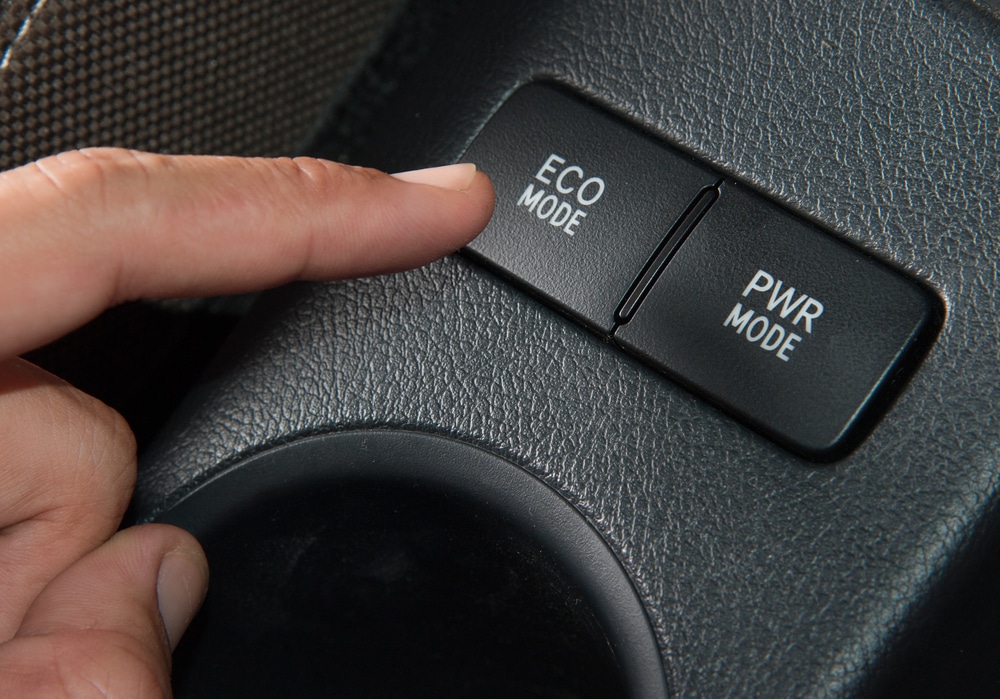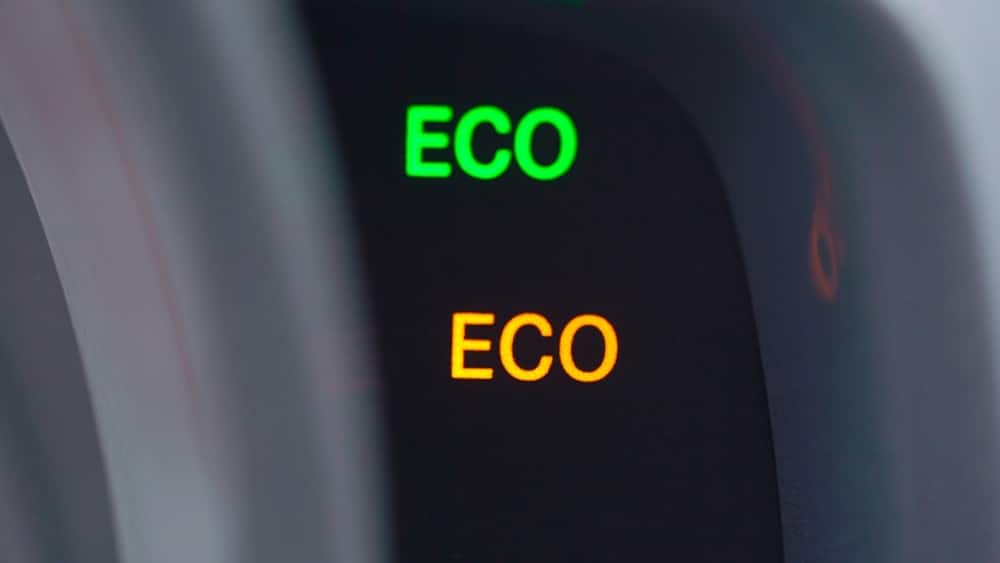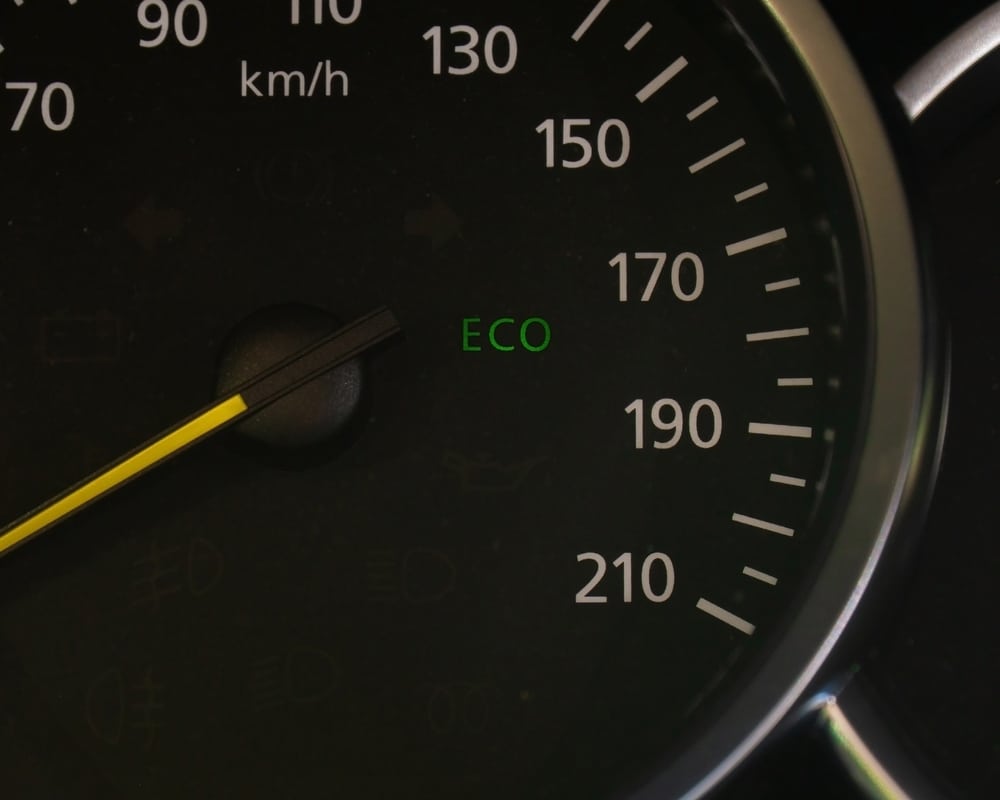
Eco mode is a feature found in many modern-day cars that can help reduce fuel consumption and emissions. When activated, eco mode adjusts the vehicle’s settings to improve fuel efficiency, sacrificing some power and responsiveness in the process. This feature is particularly useful for those who want to save on gas and reduce their carbon footprint.
The purpose of eco mode is to optimize the car’s performance for fuel efficiency rather than power.
This mode works by adjusting the engine’s operating parameters, such as throttle response and transmission shift points, to reduce fuel consumption.
Some eco modes also adjust the air conditioning and heating systems to minimize their impact on fuel economy. While eco mode may reduce the car’s power and responsiveness, it can result in significant fuel savings over time, especially in stop-and-go traffic or during long road trips.
What is Eco Mode?

Definition
Eco mode is a feature found in modern vehicles that allows drivers to improve their car’s fuel efficiency. When Eco mode is activated, the car’s engine and transmission are adjusted to provide more efficiency, sacrificing some power and responsiveness.
How Does It Work?
When Eco mode is turned on, the car’s engine control unit (ECU) adjusts the throttle’s responsiveness and the transmission’s shift pattern to reduce fuel consumption. The ECU also optimizes the engine’s performance to maximize fuel economy, reducing power output and acceleration.
Benefits
The primary benefit of Eco mode is fuel efficiency. By reducing power output and optimizing the engine’s performance, Eco mode can improve a car’s fuel economy by up to 20%. This can result in significant savings on fuel costs over time. Additionally, Eco mode can help reduce a car’s carbon footprint by reducing its emissions.
However, there are some downsides to using Eco mode. The reduced power output and responsiveness can make it more difficult to drive in certain situations, such as when merging onto a highway or passing another vehicle.
Additionally, some drivers may find the reduced power output and acceleration to be less enjoyable and engaging than normal driving mode.
Eco Mode vs Normal Mode

Differences
One of the main differences between Eco mode and normal mode is the level of power and responsiveness. In Eco mode, the car sacrifices some power and responsiveness to save fuel, while normal mode provides the standard level of power and responsiveness.
Also,, Eco mode may cause the car to shift gears at lower RPMs, which can make the car feel sluggish.
When to Use Eco Mode
Eco mode is best used in situations where fuel economy is a priority, such as during long drives or in heavy traffic. It can also be useful for drivers who want to maximize their fuel savings and reduce their carbon footprint.
However, it’s important to note that Eco mode may not be suitable for all driving conditions, such as when driving on steep hills or when needing to accelerate quickly.
When to Use Normal Mode
Normal mode is the default setting that provides the standard driving experience without any fuel-saving adjustments. It’s best used in situations where power and responsiveness are a priority, such as when needing to accelerate quickly or when driving on steep hills.
How to Use Eco Mode
Eco Mode is a great feature for those who want to save fuel and put less CO2 in the air. Here are some tips on how to use Eco Mode effectively.
Activating Eco Mode

Activating Eco Mode is quite simple. Most vehicles have a button or switch located near the steering wheel that activates Eco Mode. Once you press the button, the car’s computer will do the rest.
Disabling Eco Mode
If you want to disable Eco Mode, simply press the button again. The car’s computer will return to its normal settings and the vehicle’s performance will be restored.
Tips for Using Eco Mode
Here are some tips for using Eco Mode effectively:
- Use Eco Mode in situations where you are driving at a constant speed, such as on the highway. This will help maximize fuel efficiency.
- Avoid using Eco Mode in situations where you need quick acceleration or high performance, such as when merging onto a highway or passing another vehicle.
- Keep your tires properly inflated and maintain your vehicle regularly to maximize fuel efficiency.
- Use cruise control when driving on the highway to maintain a constant speed and reduce fuel consumption.
- Turn off the air conditioning when driving at low speeds or in stop-and-go traffic to reduce fuel consumption. If you have to choose between rolling the windows down and the A/C, choose the Windows. It’s more efficient than the drag created by A/C compressor. Studies have proved it
In conclusion, Eco Mode is a great feature for those who want to save fuel and reduce their carbon footprint. By following these tips, you can use Eco Mode effectively and maximize your vehicle’s fuel efficiency.
Conclusion
While eco mode is not a magic button that instantly saves fuel, it can provide savings of up to 5% on gasoline costs. Proper use of eco mode can result in improved fuel economy, fewer emissions, and less strain on the car’s engine and battery. The benefits of using eco mode are more noticeable for low-speed driving around town.
